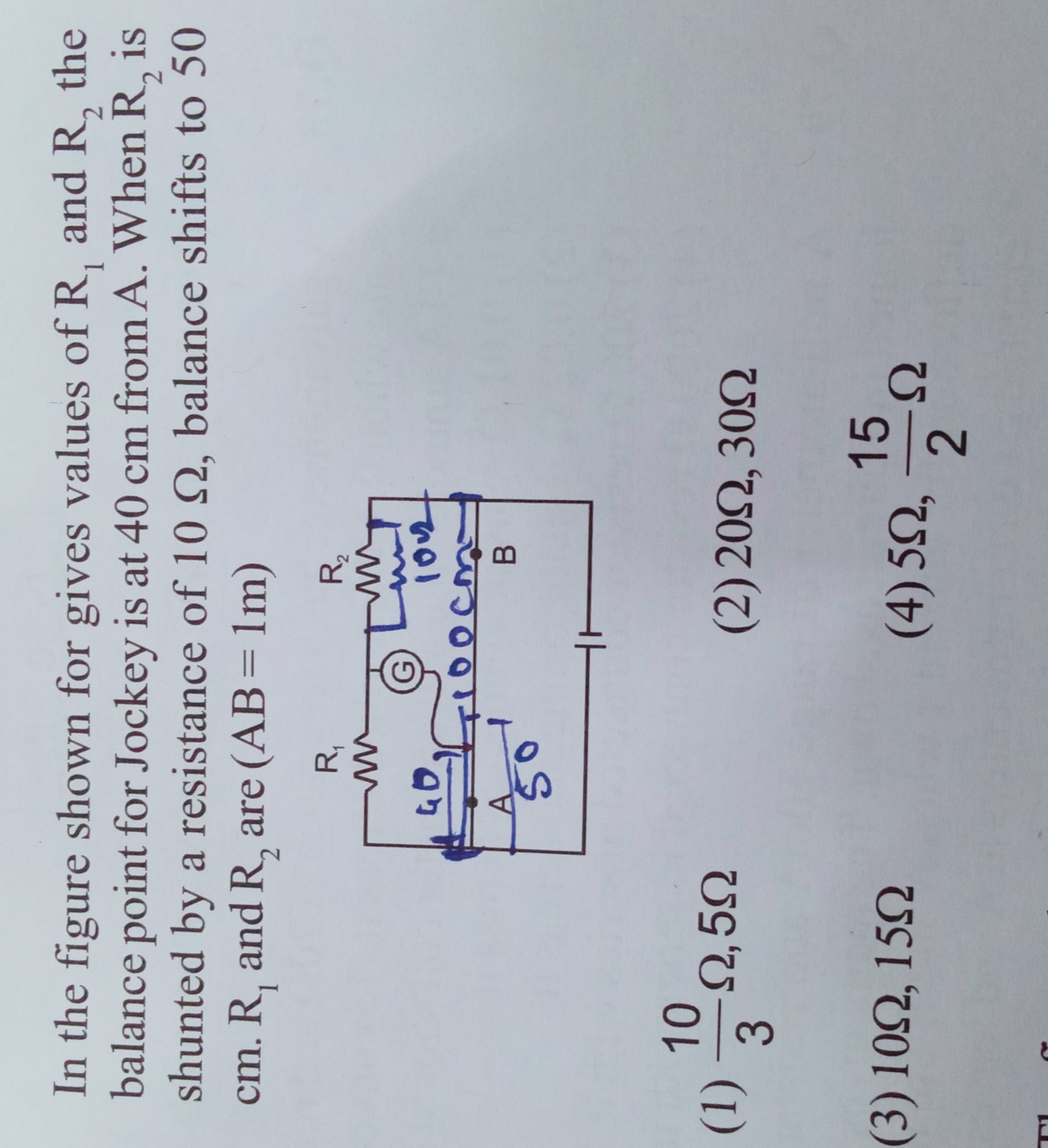Question
Question: In the figure shown for gives values of $R_1$ and $R_2$ the balance point for Jockey is at 40 cm fro...
In the figure shown for gives values of R1 and R2 the balance point for Jockey is at 40 cm from A. When R2 is shunted by a resistance of 10 Ω, balance shifts to 50 cm. R1 and R2 are (AB = 1m)

310Ω,5Ω
20Ω, 30Ω
10Ω, 15Ω
5Ω, 215Ω
310Ω,5Ω
Solution
The meter bridge works on the principle of the Wheatstone bridge. At the balance point, the ratio of the resistances in the two gaps is equal to the ratio of the resistances of the two segments of the bridge wire. Let the resistance per unit length of the wire be ρ.
In the first case, the balance point is at a distance l1=40 cm from A. The resistance of the left segment of the wire is Rleft_wire=ρl1=40ρ. The resistance of the right segment of the wire is Rright_wire=ρ(100−l1)=ρ(100−40)=60ρ. The resistance in the left gap is R1. The resistance in the right gap is R2. At the balance point, we have: R2R1=Rright_wireRleft_wire=60ρ40ρ=6040=32 This gives the equation: 3R1=2R2. (1)
In the second case, R2 is shunted by a resistance of 10 Ω. The equivalent resistance of the right gap is the parallel combination of R2 and 10 Ω. Let R2′ be the equivalent resistance in the right gap. R2′=R2+10R2×10 The balance point shifts to l2=50 cm from A. The resistance of the left segment of the wire is Rleft_wire′=ρl2=50ρ. The resistance of the right segment of the wire is Rright_wire′=ρ(100−l2)=ρ(100−50)=50ρ. At the new balance point, we have: R2′R1=Rright_wire′Rleft_wire′=50ρ50ρ=5050=1 This gives the equation: R1=R2′. Substituting the expression for R2′: R1=R2+1010R2. (2)
Now we solve the system of equations (1) and (2). From equation (1), R1=32R2. Substitute this into equation (2): 32R2=R2+1010R2 Since R2 is a resistance, R2=0. We can divide both sides by R2: 32=R2+1010 Cross-multiply: 2(R2+10)=3×10 2R2+20=30 2R2=30−20 2R2=10 R2=210=5Ω
Now substitute the value of R2 back into the expression for R1: R1=32R2=32×5=310Ω
Thus, R1=310Ω and R2=5Ω.
